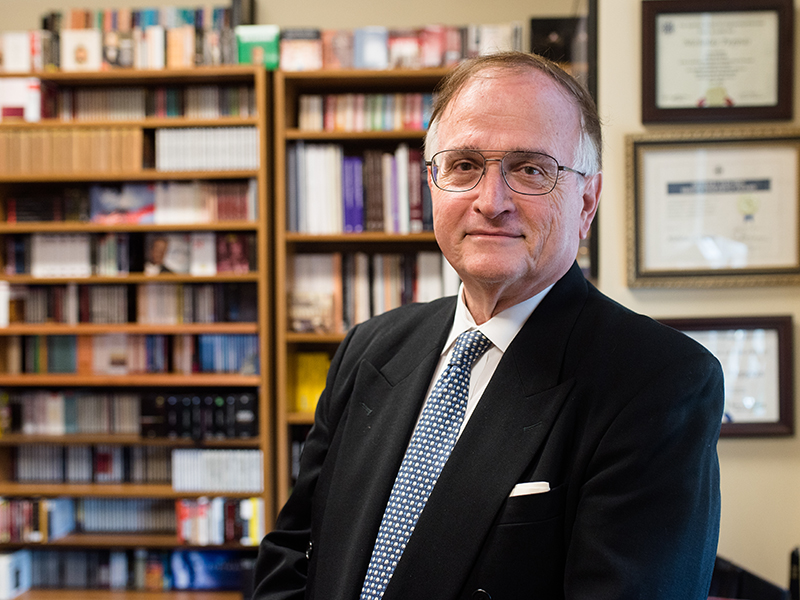Nicholas A. Peppas is the Cockrell Family Regents Chair in Engineering (#6) at the University of Texas at Austin, with appoints in the Department of Biomedical Engineering, the McKetta Department of Chemical Engineering, the College of Pharmacy, and the Dell Medical School. He is a world leader in biomaterials, controlled drug delivery, and bionanotechnology. He received a Dipl. Eng. from NTU Athens (1971) and a Sc. D. from MIT (1973).
Dr Peppas has published more than 1,200 refereed publications and is the inventor of 54 US and international patents. He is the coauthor or coeditor of 41 books and volumes, including the classic, three-volume Hydrogels in Medicine and Pharmacy (CRC Press, 1987). His pioneering contributions have received more than 100,000 citations making him one of the most cited chemical or biological scientists in the world. Of particular note is his lifetime effort to rationalize the design and development of biomaterials, drug delivery systems and medical devices. This has led to the development of the mathematical and physicochemical foundations of these fields including several theories and equations, widely used now in biomedical engineering. These include the Peppas equation (for the analysis of the abnormal and highly non-Fickian release and delivery of drugs, peptides and proteins from controlled release devices), the Peppas-Merrill equation (for the analysis of hydrogel equilibrium swelling) the Brannon-Peppas theory (the first theory to analyze the behavior of intelligent, ionic gels in multicomponent biological fluids), the Huang-Peppas interpenetration theory of tethered structures across biological tissues, and the Peppas-Ritger correlation which has more than 1,000 citations in the last 15 years. He has been recognized by more than 180 international awards. His modeling, biomaterials, cellular and drug delivery research has been funded continuously since 1980 by NIH and since 1978 by NSF.
Peppas is also a recognized teacher and educator. He has supervised the work of more than 300 graduate students and visiting scientists including 112 PhDs. He has also nurtured more than 500 undergraduates who have worked in his laboratory. Many of them have become leading biomedical scientists, engineers, physicians and medical professionals.
Contact information is available on the Contact Us page.
UT Biomedical Engineering Faculty Profile
